-
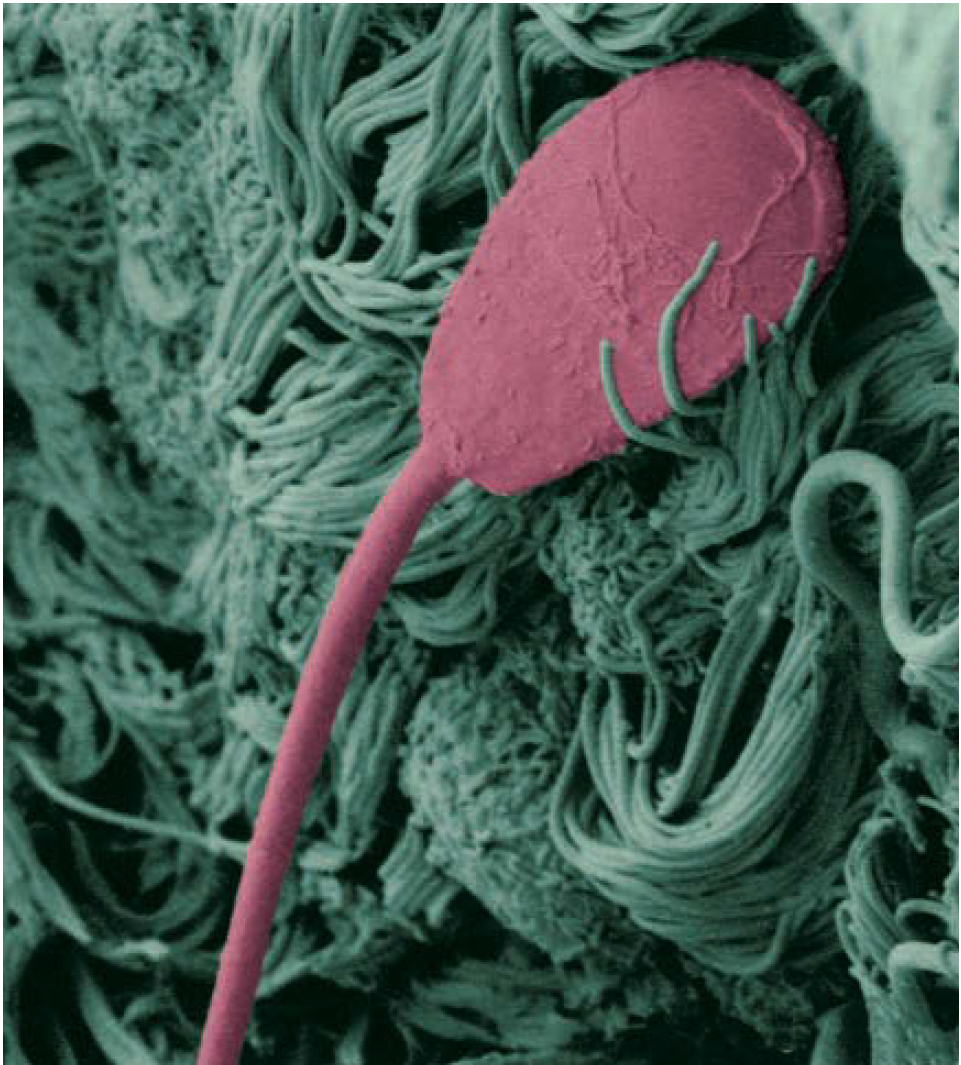
Mammalian Fertilization: Sensing Mechanism Near the Oocyte
Hyperactivation is a crucial phase in sperm migration, occurring towards the end of capacitation. It is characterized by increased swimming velocity and force, asynchronous flagellar beating, and detachment from oviduct epithelial cells. This phase enables sperm to respond differently to fluid currents and aids in their detachment from the oviduct. Thermotaxis refers to the ability…
-
Gamete Fusion and Prevention of Polyspermy in Mammals
In mammals, the side of the sperm head contacts the egg, initiating the acrosome reaction, which releases enzymes and exposes the inner acrosomal membrane. Membrane fusion starts at the equatorial region, aided by actin polymerization extending microvilli from the egg to the sperm.
-
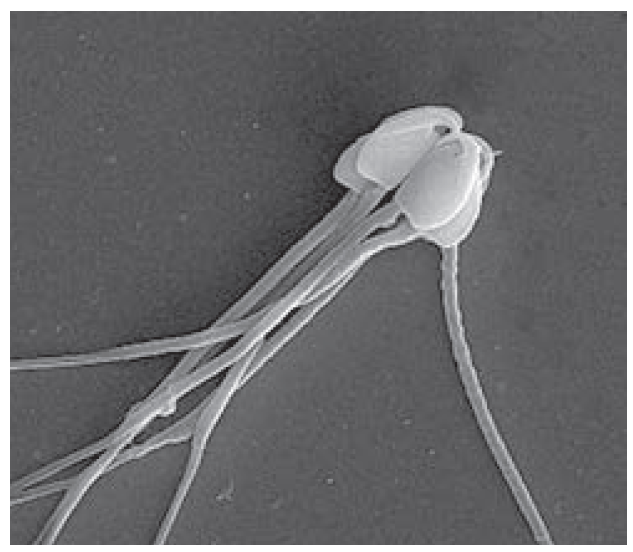
Mammalian Fertilization: Translocation
Mammalian fertilization is an intricate process occurring within the female reproductive tract, which actively regulates the transport and maturity of gametes[. The **oocyte-cumulus complex** plays a crucial role, with cumulus cells forming a protective matrix around the oocyte, aiding its transport to the ampulla of the oviduct. **Sperm translocation** involves several mechanisms, including sperm motility,…
-
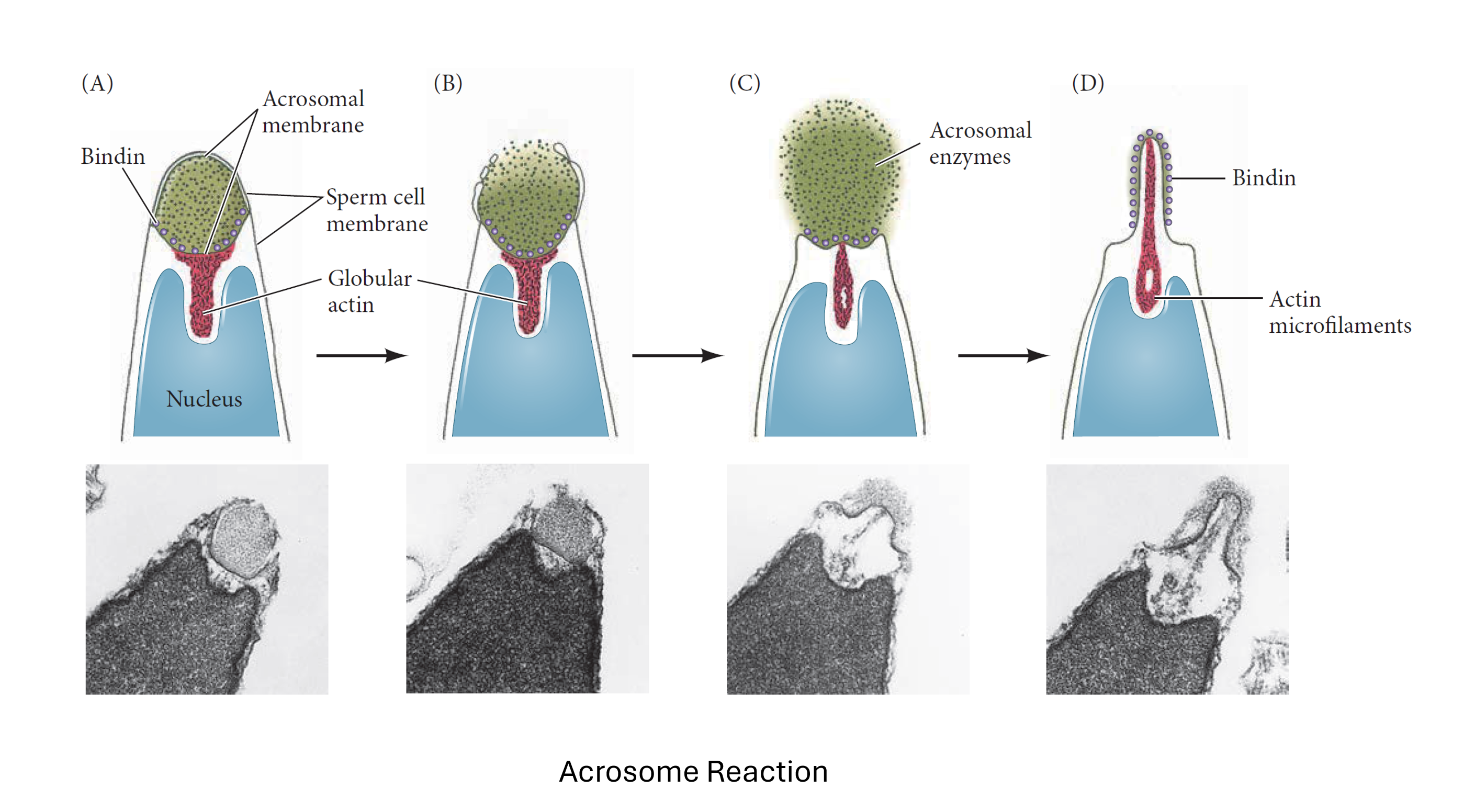
Acrosome Reaction
The acrosome reaction is a crucial process in fertilization, enabling the sperm to penetrate the egg’s protective layers and achieve fertilization. This reaction involves a series of biochemical and structural changes in the sperm’s acrosome, a cap-like structure covering the anterior part of the sperm head.
-
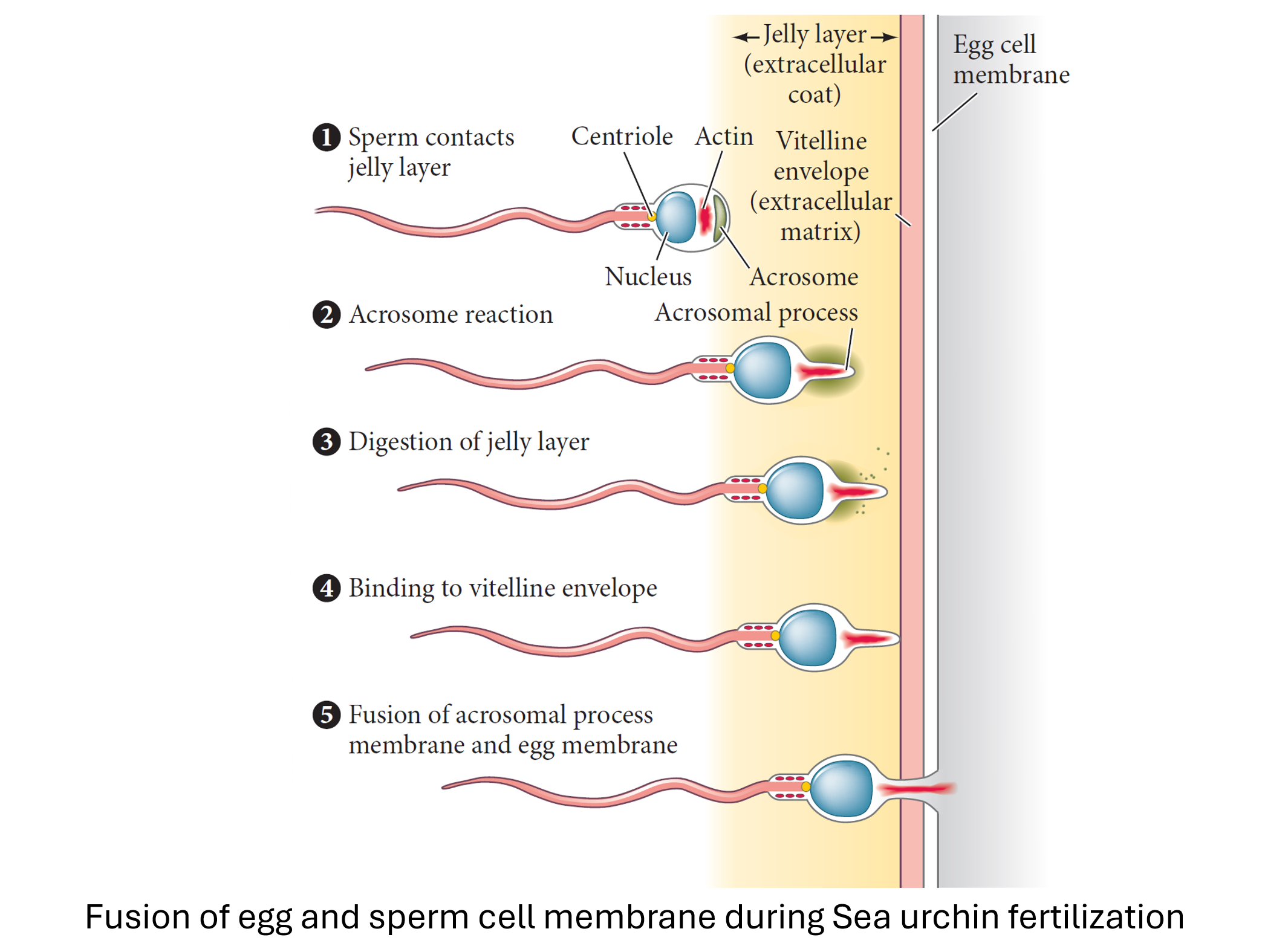
Fertilization
In the intricate dance of fertilization, mammalian eggs undergo fascinating processes. From pronuclear migration and DNA uncoiling to the interplay of mitochondria and cytoplasmic contributions, each step contributes to the formation of new life. Sperm-egg interactions, centrosomes, and the orchestration of mitotic spindles—all converge in this remarkable journey.
-
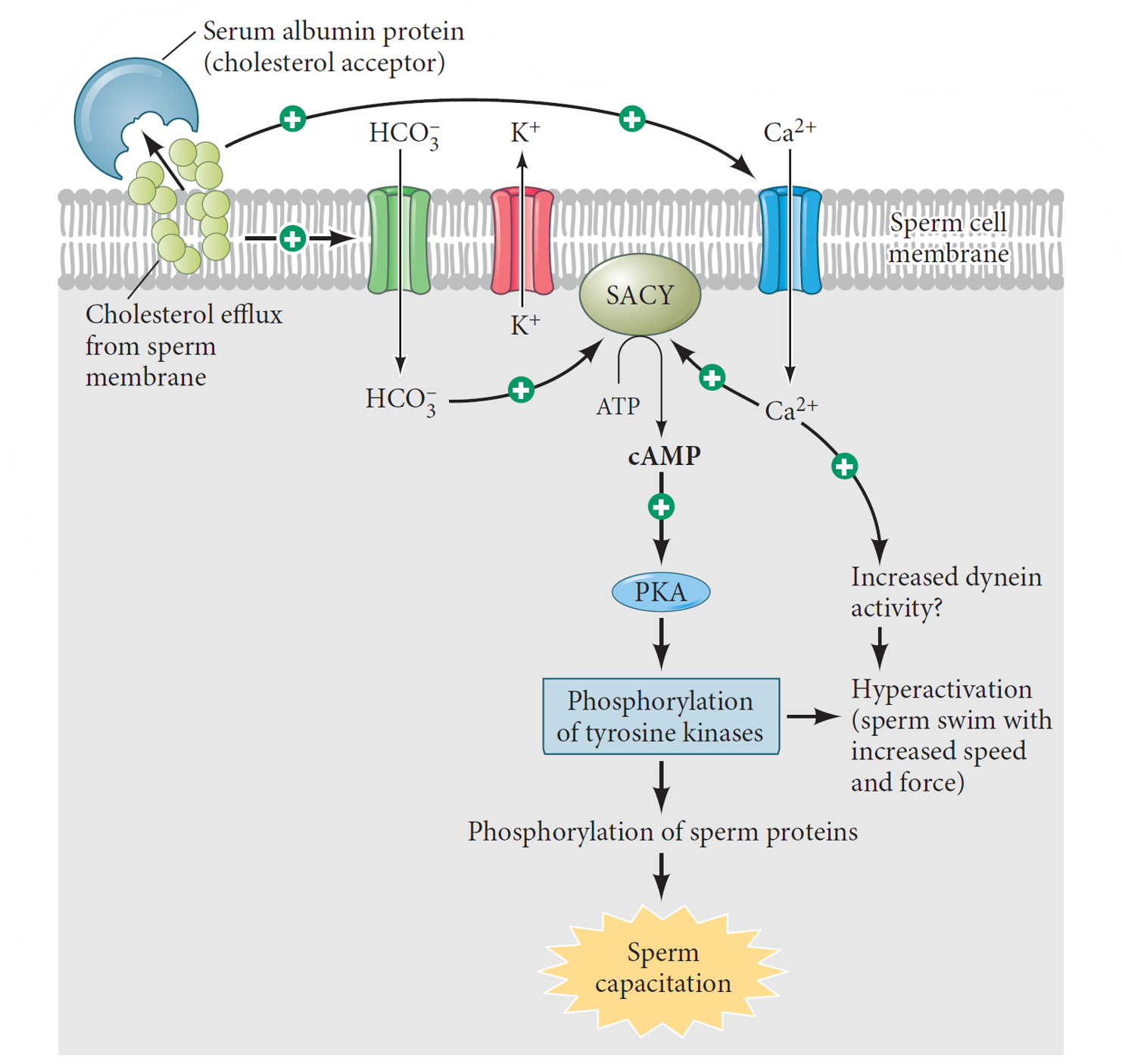
Mammalian Fertilization: Capacitation
Capacitation is a vital process that enables mammalian sperm to fertilize an egg. Unlike amphibians or sea urchins, mammalian sperm are initially immature and require capacitation during their journey from the vagina.
-

Karl Ernst von Baer: A Pioneering Scientist in Embryology
Karl Ernst von Baer stands as a trailblazer in the realm of embryology, leaving an indelible mark on our comprehension of vertebrate development. His groundbreaking revelations encompassed the identification of pivotal structures like the notochord and the mammalian egg. Von Baer’s keen observations and meticulous comparisons led to the formulation of “von Baer’s laws,” which…
-
Cellular dynamics
Delve into the intricate world of cellular dynamics during embryonic development. Discover how cells orchestrate the formation of complex organisms through processes like division, shape-shifting, migration, growth, and even programmed death. Unveil the role of cellular behavior in sculpting life’s earliest stages.
-
Embryonic Homology
Embark on a journey into the realm of embryonic homology, uncovering the intricate relationships between structures derived from common ancestors. Distinguish homology from analogy and explore how developmental changes drive evolutionary transformations. Dive into the world of artificial selection and gene mutations, unveiling their roles in shaping diverse species.
-
Commitment in Embryonic Development
Dive into the intricate process of commitment in embryonic development, where undifferentiated cells transform into specialized types. Explore the stages of specification and determination, and how cell fate and complex structures are shaped. Uncover the strategies various species employ in this fundamental journey.
-
Autonomous Specification
Delve into the realm of embryonic cell commitment through the lens of autonomous specification. This strategy, found in various organisms like snail Patella and tunicate embryos, involves the independent determination of cell fate within the egg cytoplasm. Discover how specific regions and factors influence gene expression, ultimately steering cells toward distinct destinies. Explore the groundbreaking…
-
Conditional Specification
Explore the fascinating concept of conditional specification in embryonic development, where cell destinies are shaped by interactions with neighboring cells. Unveil the significance of juxtacrine and paracrine factors, as well as mechanical stress, in determining cell fates. Discover how pivotal experiments by pioneers like Wilhelm Roux and Hans Dreisch challenged traditional notions of autonomy. Delve…
-
Syncytial Specification
Delve into the intricate strategy of syncytial specification, a unique approach to cell fate determination. Explore its fusion of autonomous and conditional aspects, witnessed in the fruit fly Drosophila melanogaster. Uncover the significance of the syncytial blastoderm—a shared cytoplasm containing multiple nuclei—and how it plays a pivotal role in the simultaneous establishment of cell identities…
-
Hippo Signaling Pathway
The Hippo signaling pathway, initially discovered in Drosophila, plays a pivotal role in regulating organ size by orchestrating cellular processes such as growth, division, and apoptosis. Unlike traditional signaling pathways, Hippo lacks a specific ligand or receptor, instead relying on intricate interactions and key players to govern its intricate cascade. Notably, the loss of Hippo…
-
Stem Cells
Delve into the fundamental aspects of the stem cell concept through these study notes. Explore the intricacies of stem cell division, potency variations, and the role of progenitor cells. From totipotent and pluripotent stem cells to the significance of adult stem cells, grasp the essence of these versatile entities that drive cellular diversity and tissue…
-
Stem Cell Regulation
Dive into the intricate world of stem cell regulation with these comprehensive study notes. Explore the dynamic interplay between extracellular and intracellular factors that dictate stem cell behavior. From the pivotal role of the stem cell niche to the influence of cytoplasmic determinants, transcriptional networks, and epigenetic patterns, uncover the mechanisms that steer stem cells…
-
Pluripotent Stem Cells
Explore the realm of pluripotent stem cells through these insightful study notes. Unveil their significance in research and therapy, their origin in the mammalian inner cell mass, and the intricate regulatory mechanisms that maintain their pluripotency. Delve into the orchestration of gene expression, the roles of key transcription factors, and the interplay of cell-to-cell interactions…
Categories
- Anatomy (9)
- Animal Form and Functions (38)
- Animal Physiology (65)
- Biochemistry (33)
- Biophysics (25)
- Biotechnology (52)
- Botany (42)
- Plant morphology (6)
- Plant Physiology (26)
- Cell Biology (107)
- Cell Cycle (14)
- Cell Signaling (21)
- Chemistry (9)
- Developmental Biology (36)
- Fertilization (13)
- Ecology (5)
- Embryology (17)
- Endocrinology (10)
- Environmental biology (3)
- Genetics (59)
- DNA (27)
- Inheritance (13)
- Histology (3)
- Hormone (3)
- Immunology (29)
- life science (76)
- Material science (8)
- Microbiology (18)
- Virus (8)
- Microscopy (18)
- Molecular Biology (113)
- parasitology (6)
- Physics (3)
- Physiology (11)
- Plant biology (26)
- Uncategorized (7)
- Zoology (112)
- Classification (6)
- Invertebrate (7)




